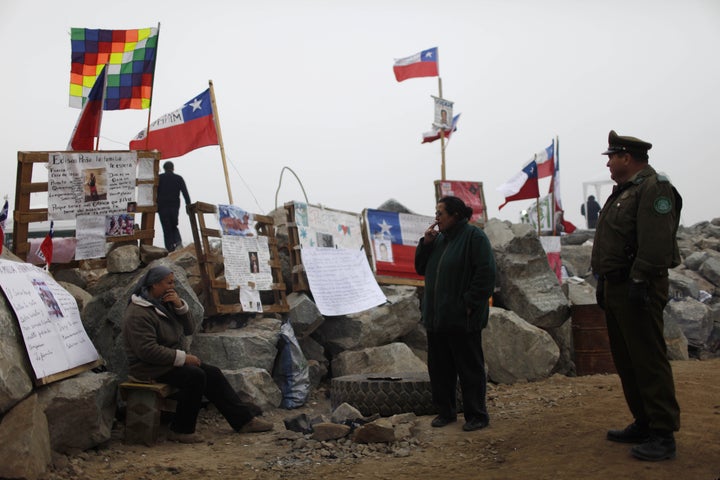
This piece originally appeared on Reuters.com.
Only a few years ago I learned of my father's work in Chile's nitrate mines. Like other working-class men who faced crippling unemployment in the late 1960s, he headed north in search of better paying but dangerous mining work in Chile's dusty desert region, El Norte Grande.
Until recently the dangers he described seemed a relic of Chile's distant past, removed from the present-day Chile of clean, modern cities and recent economic success.
Last month Chile celebrated 200 years of independence from Spain, but the saga of the 33 miners trapped 2,300 feet underground in the San Jose copper and gold mine loomed over the bicentennial. As the looting following February's earthquake served as an eye-opener to the country's social and economic inequalities, the plight of the trapped miners has again exposed the hardships Chile's poor face in a country where 14 percent of the population lives in poverty, according to the World Bank.
Despite efforts to develop other industries, Chile's economy rests on mining. Chile leads the world in copper production, accounting for 40 percent of its exports, and supplies nearly a third of the world's copper.
Like many of today's miners, my father had few options for decent paying work after losing his job as a police officer in his native Valparaíso. During his time in the mines he met many men like himself who chose to risk their lives in the Atacama Desert rather than settle for low-paying agricultural work.
It's still hard to picture my nattily dressed father, who worked as a doorman after coming to the United States, handling dynamite and hoisting buckets of dirt and rock from the dusty ground in search of mineral. He almost talked his way into a plumb job patrolling the mining company-built swimming pool. "It's lucky I didn't get that job," my father chuckles. "I would have stayed forever."
He didn't stay forever. He ended up spending four years in the salitreras, or nitrate towns, before the prospect of an early death from an accident or mining-related afflictions like silicosis convinced him to move on.
Perhaps because he left when he was twenty-seven, his stories still retain a whiff of youth and adventure. There was a lot of drinking, especially on weekends. Prostitutes passed through. Plenty of goofing off also occurred, sometimes with grave consequences. A rival palanquero (or brakeman) who boasted of his superior abilities on the job died after falling in front of a cargo car. Even my father didn't come away entirely unscathed. A permanent cloud of thick dust enveloped the town, visible from a mile away, and I still wonder if his later cancers originated in the desert.
With the development of cheaper synthetic nitrate, most of the nitrate fields like the one where my father toiled eventually shut down. The ruins of abandoned mining towns now dot the Atacama Desert and some have even taken on second lives as museums that draw thousands of tourists each year.
But the lessons of Chile's nitrate boom and bust, which helped spur worker rights movements, should not remain confined to the desert. The miners underground now have had to fight to maintain their sanity while waiting months for rescue. And yet they are the lucky ones. Though mining safety in Chile has improved in the last forty years since my father left, small privately owned mines have operated with little oversight. Another worker died in this same mine in 2007, and the region still has the highest worker mortality rate in the country, according to Chile's minister of health, Dr. Jamie Manalich.
At minimum the accident has demonstrated the urgent need for increased safety regulations to protect the workers who make Chile's prosperity possible. Despite reigning as Latin America's economic powerhouse for the past two decades, Chile continues to suffer from some of the highest levels of income inequality in the world. The struggle of the country's trapped miners has once again laid bare the human costs of such "progress."
This year's twin disasters, the earthquake and now the mine collapse, should persuade Chile to shore up the country's economic foundation through greater investments in education, for example, that will help reduce poverty and inequality in the long-term.
Chile cannot afford to look back on 2010 as the year of missed opportunities.